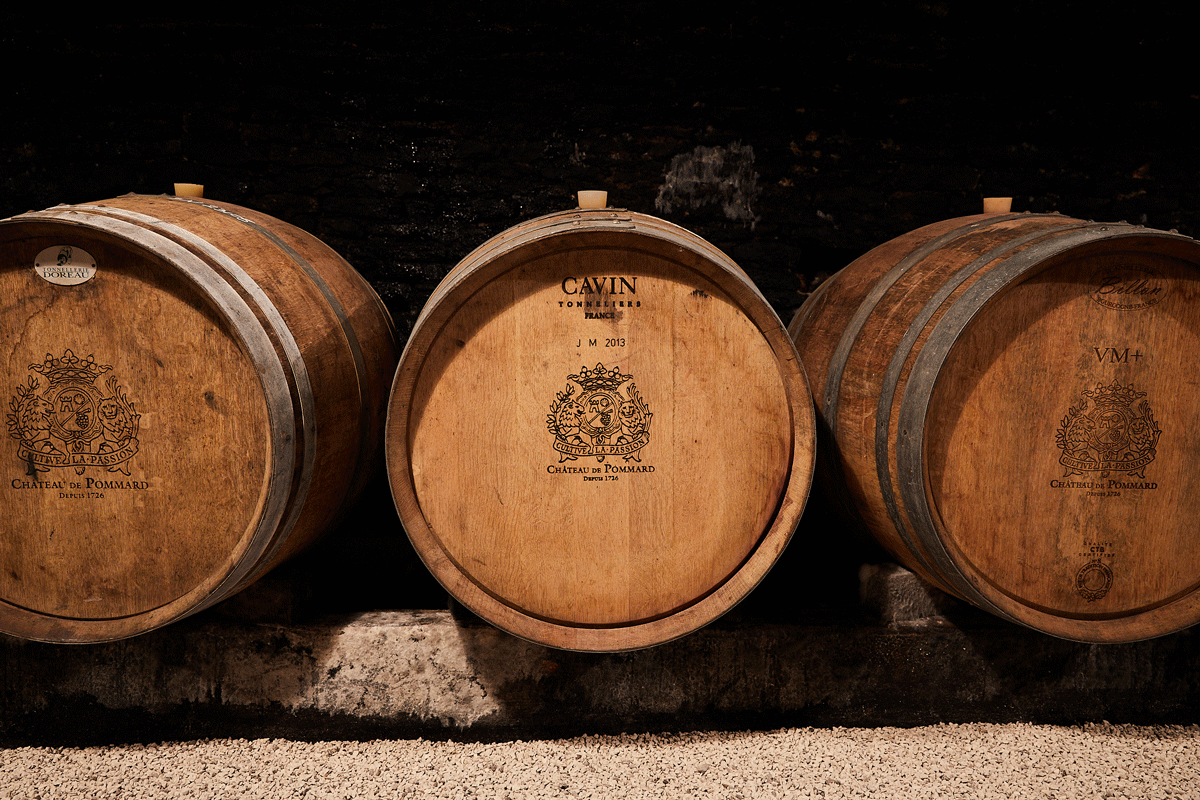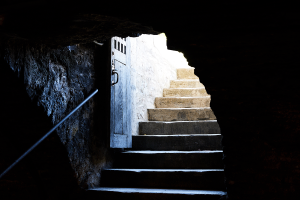
Wine is made to be enjoyed and at Chateau de Pommard we vinify our cuvées so that you can taste them from the tie of purchase. However, did you know that our wines are built for aging? Most of our white wines will develop in complexity and depth of flavours for 15 years. The Corton-Charlemagne even has an aging potential of 20 to 30 years, depending on the vintage. Our red wines, for their part, can evolve for three decades before being tasted. All you have to do is respect a few essential principles when it comes to storing.
Make a clean sweep
Though dusty bottles may have a romantic charm, an impeccable underground cellar is essential in order for your wines to age in the best conditions. Although it protects against brutal oxidation, the cork stopper is nonetheless porous. The offensive odors that could spread in a poorly maintained cellar could then contaminate the wine and permanently alter its aromas. Even the cardboard boxes that are used to ship and transport wines are subject to mold and therefore should not be used to store wine. Throw them away, and install your bottles on shelves, designed to optimize their storage. These wooden or metal bases also keep the wine horizontal, maintaining a permanent contact between the cork and the liquid. The cap thus avoids drying out and allowing air to enter the bottle, which would oxidize the wine. Remove cans of paint or solvents that you keep in this room out of sight. They are toxic, and could also degrade the wine.
Turn off the lights
It is no coincidence that wine is traditionally stored in underground cellars without windows, where darkness reigns supreme: light is one of the worst enemies of wine. The rays, whether they come from the sun or artificial lighting, can alter their aromas. Over time, the fruity notes disappear in favor of a “taste of light” characterized by aromas of dust, leek, and onion as unpleasant to the nose as in the mouth. White wines and rosés are the most sensitive, especially when their bottle is made of white glass. In order to illuminate your cellar properly, it is preferable to use low-consumption LEDs lights and bulbs to fluorescent or neon lights. They are less aggressive, have reduced radiation and give off less heat. Finally, make sure to install them so that they indirectly shine on your wines.

Maintain a stable temperature and high humidity
The temperature of your cellar is a determining parameter in the care of your wines. Too cold, they will not open. Too hot, they will grow old prematurely. The ideal storage temperature is between 11 and 14 ° C. A constant temperature is essential as abrupt variations also have a negative effect on the wine as it ages. Humidity level must be between 70% and 80% in order to keep your wines protected. If the air is too dry, the cork tends to retract allowing air to enter the bottle and oxidize the wine. This oxidization will cause the wine to lose its intensity and age prematurely. However, be careful not to fall into the opposite extreme: a cellar too wet can cause mold, which is also likely to deteriorate the wine. Some tips exist to obtain an ideal humidity level. If your cellar is too dry, do not hesitate to place a humidifier; if it is too humid, a fan will allow it to dry slightly.
Avoid the kitchen
Don’t have access to an underground cellar? A common idea is to store your bottles in the kitchen. Don’t! Between the refrigerator and the oven, it is the room that experiences the most significant temperature fluctuations in a home. Appliances are also known for their micro vibrations. Although they seem imperceptible, they tend to stir the wine on a continuous basis, thus threatening its aging potential. Better store your bottles in a bedroom, away from the sunlight and as far as possible from the radiator – always horizontally. The safest alternative, however, is to invest in an electric cellar, especially if you intend to let your wines evolve for a few years before enjoying them.
Sheltered from light and heat, in a damp room with little exposure to vibrations, your wine has every chance to evolve in the best possible conditions. Has the moment come to taste it? Remember to take it out several hours before serving, and bring it to the ideal temperature.